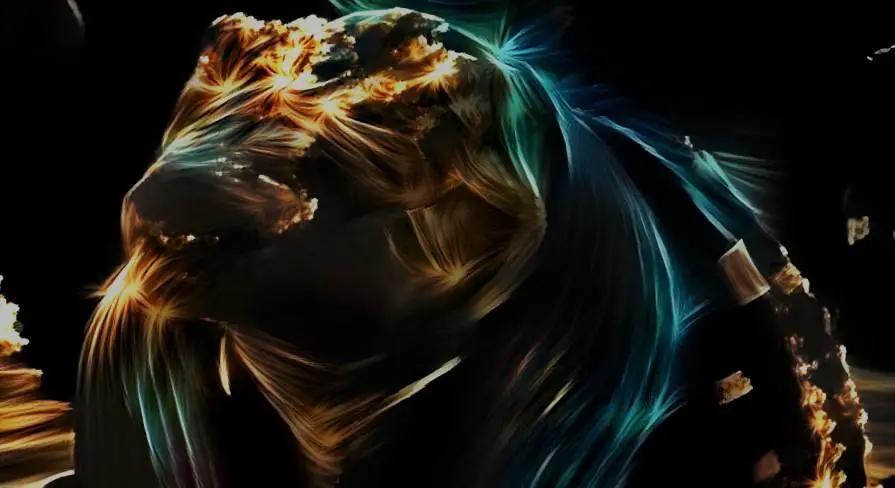Share the Lore!
By: Alex Postrado
Death and Redemption in Egyptian Mythology
Of the over 2,000 deities that make up the Egyptian pantheon, perhaps, none would measure up to the notorious fearsomeness of Ammit.
A monster, a demoness, and a goddess — all-in-one — Ammit was the stuff of Egyptian nightmares long before the being was introduced to the modern world as a villainous character in Marvel’s Moon Knight.
Though in the comics, Ammit was more of a monstrous creature than a god.
And not only that, Ammit — in this version — also lacks the very power that made her the indispensably formidable underworld deity that influenced the choices and way of life of ancient Egyptians.
Curious about that story? Here it goes.
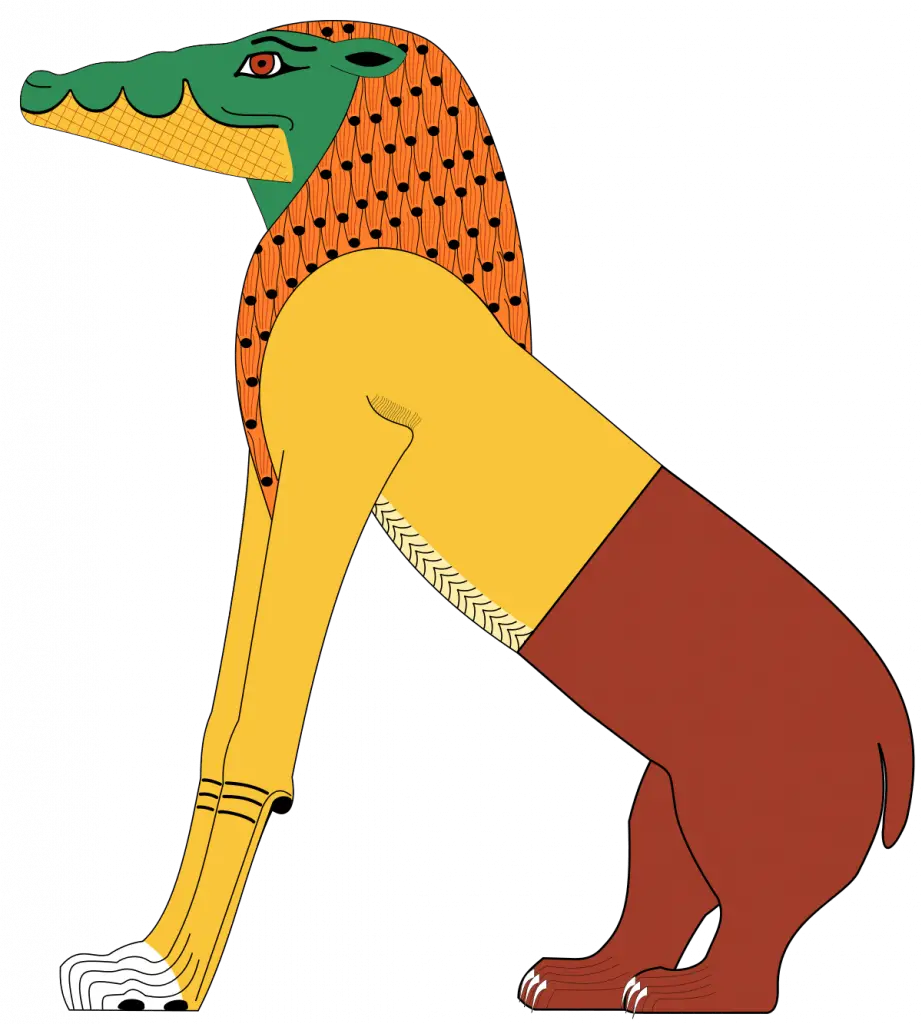
Egypt’s Funerary Deity
In ancient Egyptian religion, a being is believed to have the composite features of the three largest and most dreaded, “man-eating” animals known to Egyptians of that time.
With the head of a crocodile, the forequarters of a lion, and the hind legs and rear end of a hippopotamus, this being was chiefly known as Ammit.
Terrifying, to say the least, Ammit was not your typical chimera-like monster.
She belongs to the set of funerary deities that roam Duat, the Egyptian underworld — settling near the scales of justice to conveniently carry out her role as the “patron of death and execution.”
Ammit was more frequently viewed by many 一 especially nowadays 一 as a demon with such a task in hand. Sinister and vicious.
However, that notion does not mean that it was accurate.
In fact, according to ancient myths, the deity that Ammit was most often associated with was Ma’at, the winged goddess of law, truth, and justice.
Together, the two maintain the cosmic balance and order — although, it just so happens that Ma’at’s role has something more to do with deciding the fate of the souls that enter the underworld, and Ammit’s job was about exacting the punishment for those who fail Ma’at’s test.
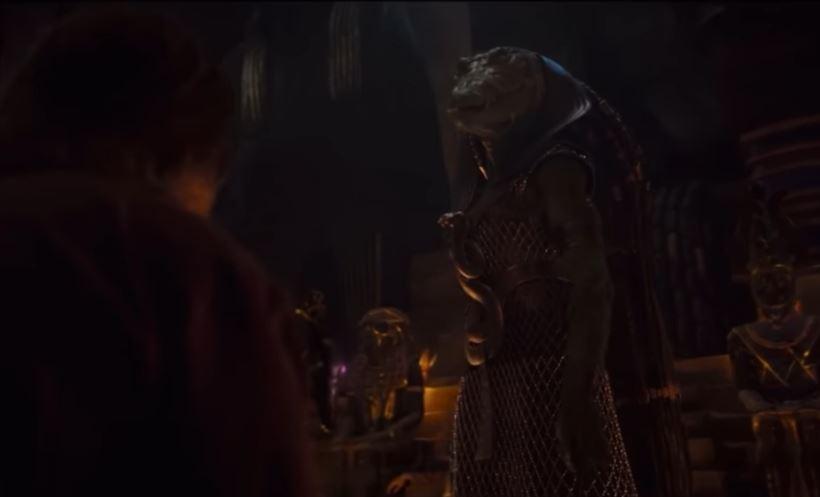
Death in Ancient Egypt
While ancient Egyptians do not necessarily hold that Ammit was evil by nature, they were still terribly afraid of her.
And this was not only because of her form — which was reminiscent of the real-world creatures that make up their fears — but also because of the type of retribution she was believed to impose upon the souls deemed unworthy of entering the afterlife.
The ancient text, Book of the Dead, describes this punishment in detail, beginning from a person’s death.
It is said that, in Egyptian religion, when a person dies, their soul would be met by the jackal-headed deity, Anubis.
Anubis would, then, accompany the deceased to the Hall of Two Truths, where it will face the 42 divine judges.
When it is time, the dead would stand before Osiris — the god of the underworld — and Thoth — the ibis-headed adviser of the gods — in front of the golden scales to recite the Negative Confession — a list of 42 sins a person is to never commit in their life.
Once the confession has been said, the heart of the deceased would be handed over to Osiris, who would commence the “Weighing of the Heart.”
On one side of the golden scale, the heart of the deceased would be placed. And opposite to it would be the feather of Ma’at — the symbol of truth.
If the dead person’s heart proves to be lighter than — or at least, balanced with — the feather, the soul would be “declared pure enough” to enter Aaru, the paradise of Egyptian religion, comparable to the Christian heaven.
But, if the scales tip to show that the heart is heavier than Ma’at’s feather, then it is time for Ammit to play her part.
Ammit would consume the heart of the unworthy, preventing the impure soul from being granted immortality and joining Osiris in Aaru.
That is not the worst part, though.
Depending on the version of the myth, the fate of the devoured souls could be either of these things:
- The soul would completely vanish from existence;
- It would get cast into a lake of fire;
- Or it would “die a second time” by being cursed to a state of restlessness for all eternity.
This made Ammit the feared underworld deity that she is — shaping the way of living of ancient Egyptians who were concerned about their souls, possibly not making it past the judgment and getting eaten by the funerary demoness.
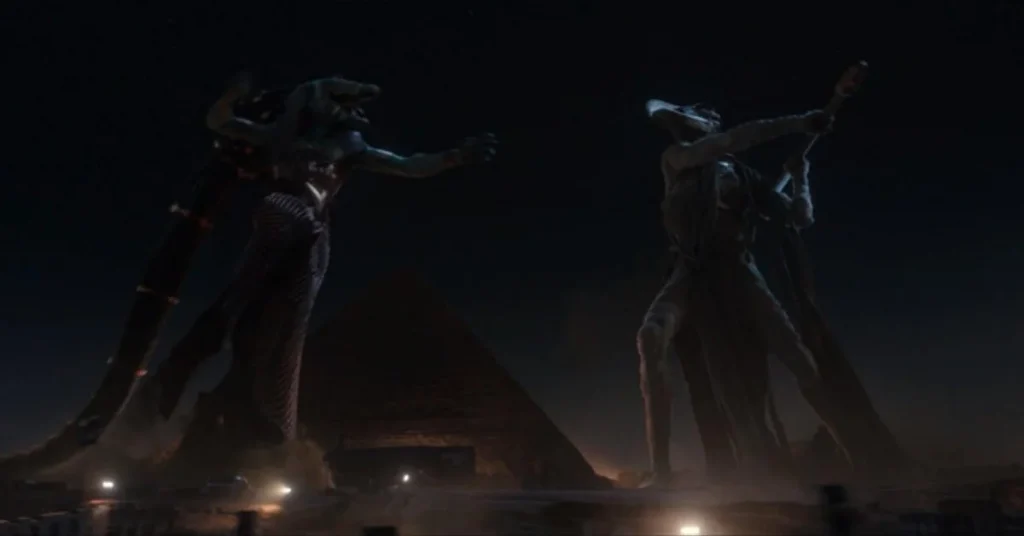
Ammit, Devourer of the Dead, and Other Names
Ammit’s prominence in Egyptian religion earned her several epithets across the centuries.
She was called the “Great of Death”, the “Punisher of evil”, the “Enforcer of Good”, the “Eater of Hearts”, and the “Eater of the Dead”.
But, perhaps, the funerary demon-god was best known as the “Devourer of the Dead” — a title that also comes with its own variation, “Devourer of bad souls”.
Not only that but the name Ammit itself also has other forms.
It could be spelled Ammut, Am-mit, Ahemait, and Amam — much like how other Egyptian deities also go by alternate renditions of their names.
Ammit vs. Sobek
As distinct as Ammit’s outward form may seem — with the crocodile head and the lion-hippopotamus meld of a body — saying that she is one of a kind would not exactly be true.
There is another god who prides itself on having crocodile features.
And he was not just any god, he was — in fact — THE Crocodile god.
His name is Sobek — also rendered as Sebek, Sobki, Souk, and Suchos — and he is associated with “pharaonic power, fertility, and military prowess,” among other things.
Sobek is believed to embody either of these three forms:
- That of a Nile or West African crocodile;
- That of a mummified crocodile;
- Or that of a man with the head of a crocodile.
Similar to Ammit, Sobek has quite a misunderstood reputation.
He could be violent and aggressive — traits that he shares with his patron animal. However, he could also be benevolent. Maybe unpredictable like the Nile, but benevolent nevertheless.
Sobek was considered a protective deity — possessing apotropaic powers, helpful in averting evil and other dangers.
But, while that granted him the “ancient Egyptian worship” treatment — as temples were built to let bejeweled crocodiles wander off freely — Ammit mostly stayed on the sidelines — primarily feared and not worshipped, with no known shrine to her name.
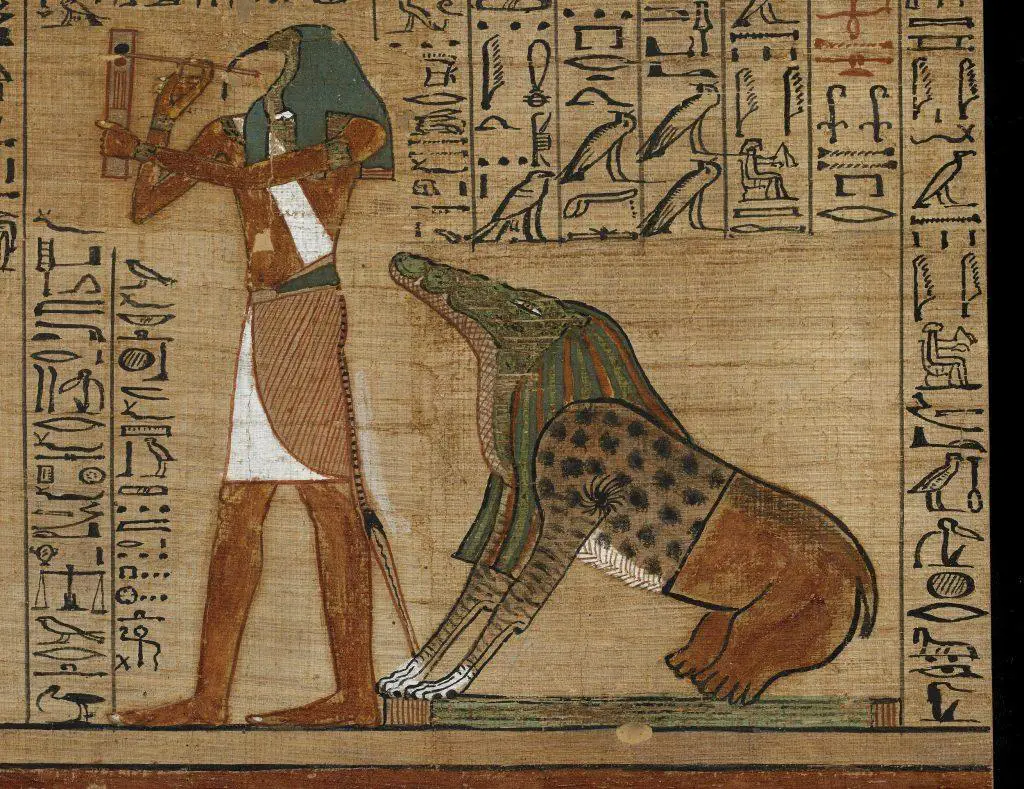
Symbols and Representation of Ammit
To be fair to ancient Egyptians, though, their aversion and fear of Ammit were arguably fitting. Perhaps, at the very least, understandable.
Ammit’s threat of possible eternal restlessness is not necessarily something anyone would want to be bound to.
In other words, their choice of not worshipping Ammit was because she represented the form of divine retribution the ancient Egyptians desperately wanted to avoid.
It also does not help that ib, or the heart of a person, carries great importance to Egyptian culture. They believe that it is the “seat of human emotions, dreams, will, and aspirations” — that is to say, a “vital component of the soul.”
And so, when the heart is used to conclude whether or not to send a person to their ultimate damnation, the anxieties of the people about Ammit become somehow — and somewhat — justified.
Another symbolism in the lore of Ammit lies in the fiery lake that other versions mention being the end of an unworthy human’s soul.
Scholars put both Ammit and this lake of fire to be representations of total destruction. And frankly speaking, who would want that?
However, as a whole, the mythology of the Ammit was not merely meant to ingrain fear amongst people. Rather, it calls for them to be sensible of their actions and lead a good, virtuous life.
References:
The Myth Of Ammit – The Devourer Of The Dead In Ancient Egyptian Religion Ammit: Mythology, Hieroglyphics & Facts Ammit - Ancient Egypt Ammit - Mythus
